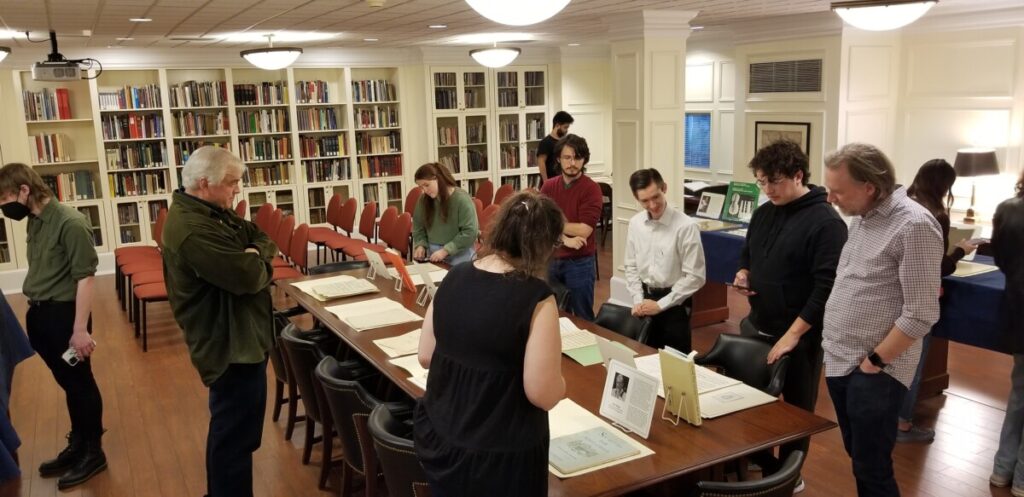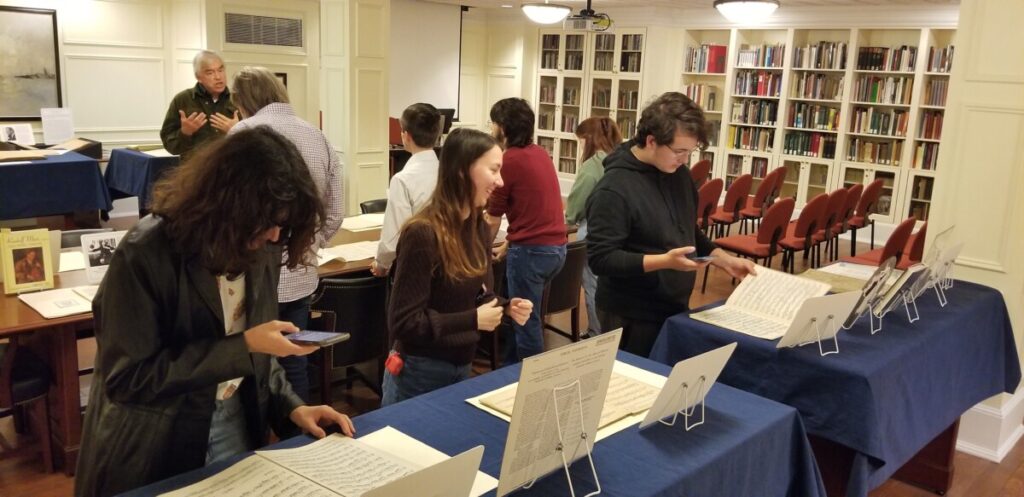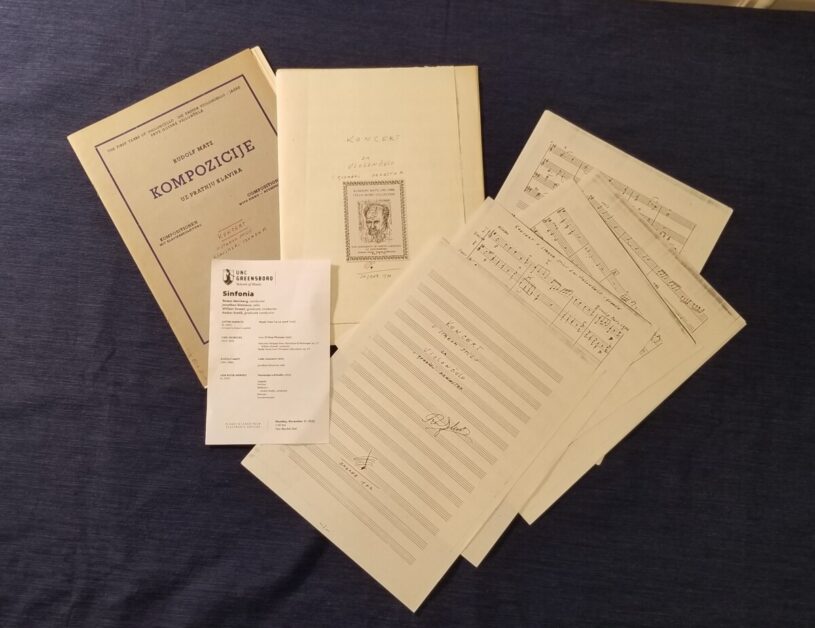The Martha Blakeney Hodges Special Collections and University Archives has a strong commitment to student outreach, teaching up to 120 instructional sessions per semester. SCUA’s class sessions often incorporate a PowerPoint presentation, a related “pop-up” display of related archival material, and a hands-on primary source analysis. This exercise integrates a variety of items from across SCUA collections, using an evaluation worksheet to assess students understanding of how to distinguish between primary and secondary sources, identify basic information about the item, recognize the significance of perspective and bias, and contextualize resources for research and writing.
The following are some of the many creative sessions developed by the SCUA archivists:
ART 344 Digital Darkroom, Kelley O’Brien, Instructor
“What is truth” is a question for the ages, and it was also a question for the students of the fall 2022 ART 344: Digital Darkroom class. One of the most collaborative classes that SCUA teaches, Digital Darkroom combines the efforts of ROI Librarian Maggie Murphy and archivists Carolyn Shankle and Kathelene Smith. While Maggie worked with her group in the library, the remaining students were divided into two groups in the Hodges Reading Room and the Research Room. Hodges was divided into multiple stations which featured rare books related to photography and photographers.
Each station highlighted a specific time period so that the students could experience the aesthetic, perspective, and technical changes in photography from the Victorian era to the 2020 Women’s March. The Research Room displays focused on the question “What is truth?” or how multiple perspectives give a more comprehensive understanding of the truth. Each table exhibited artifacts that encouraged students to find a “truth” – and since they were art students, they were asked to either describe or draw what they found. In some cases, this might be illustrated by the difference between a photograph of a student and a painting of her, or perhaps the student perspectives seen in campus scrapbooks as opposed to the administrative perspectives seen in a university publication. The students left the session with a greater understanding of what can be discovered in Special Collections and University Archives!
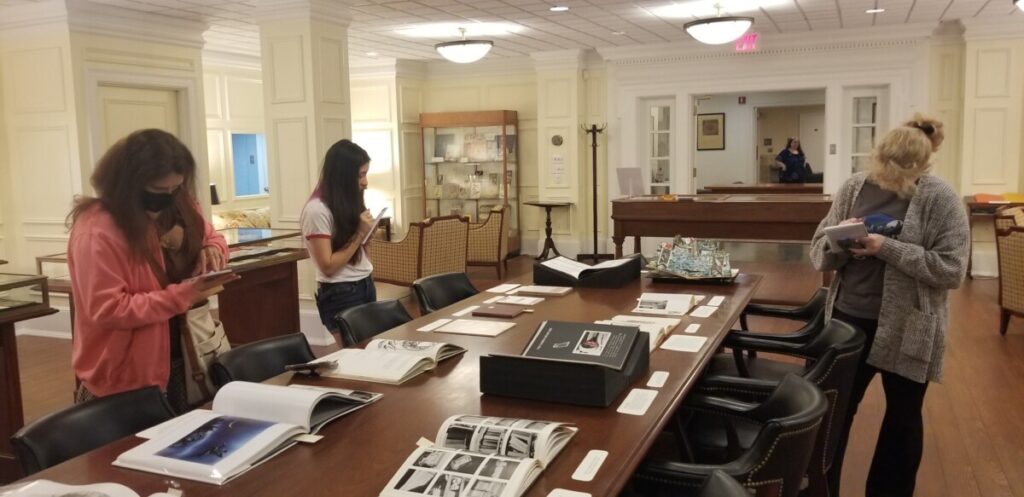
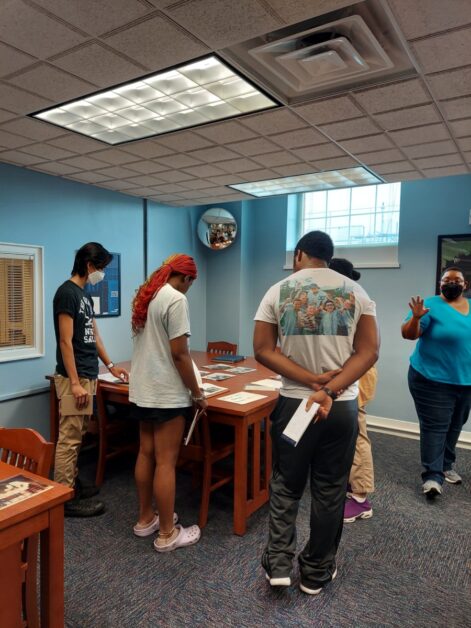
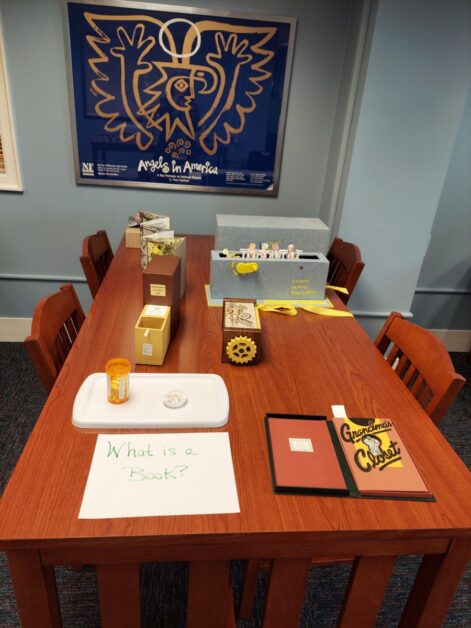
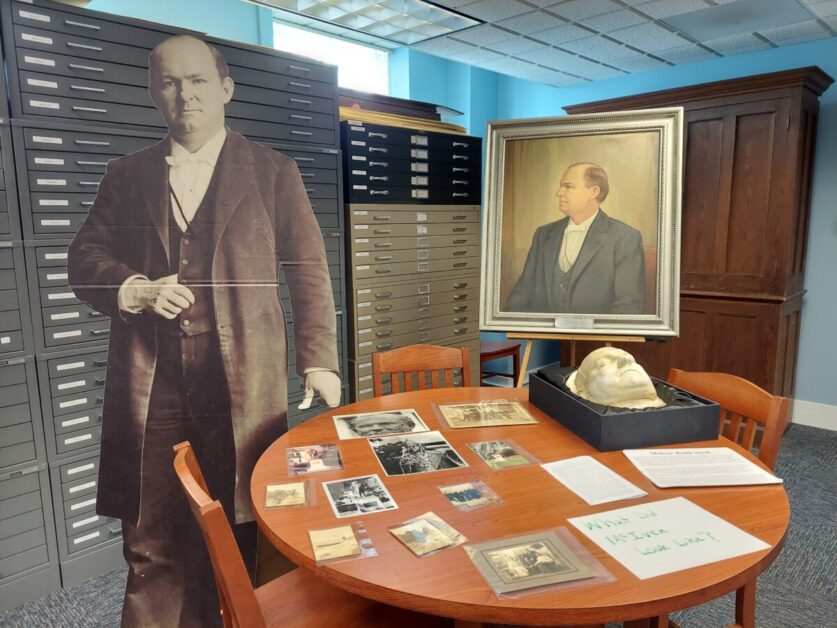
ENG 101-33: Exploring Writing in College Contexts, Maddie Poole, Instructor
The goal for this specific class session was to expose the students to zines and to give them some examples that can act as models or entry points for their unit project. In the Hodges Reading Room, they spent time with zines so that they could find joy in and forge their own unique relationship with the craft. The end project was for each student to create a single page zine. Archivist Suzanne Helms demonstrated how to make a French-fold zine and Specialist Carolyn Shankle curated the display of zines found in Rare Books and University Archives.
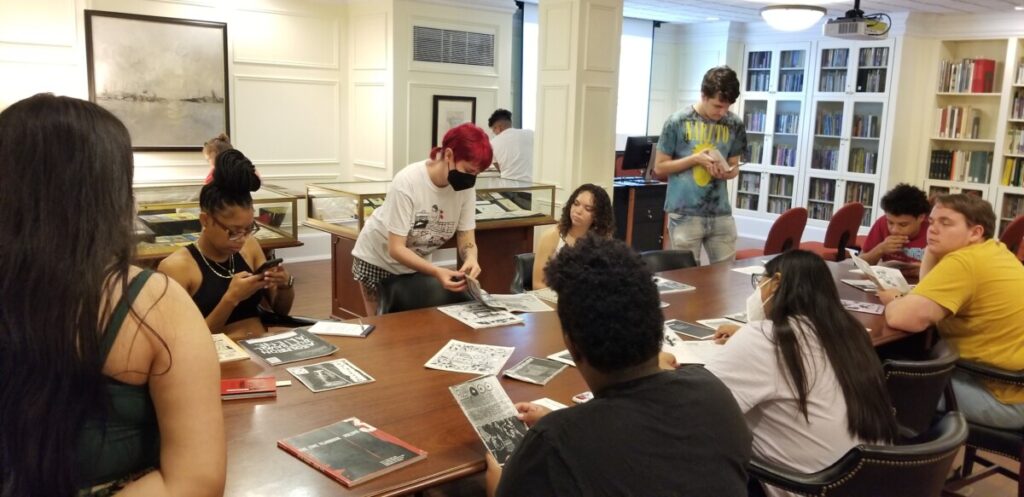
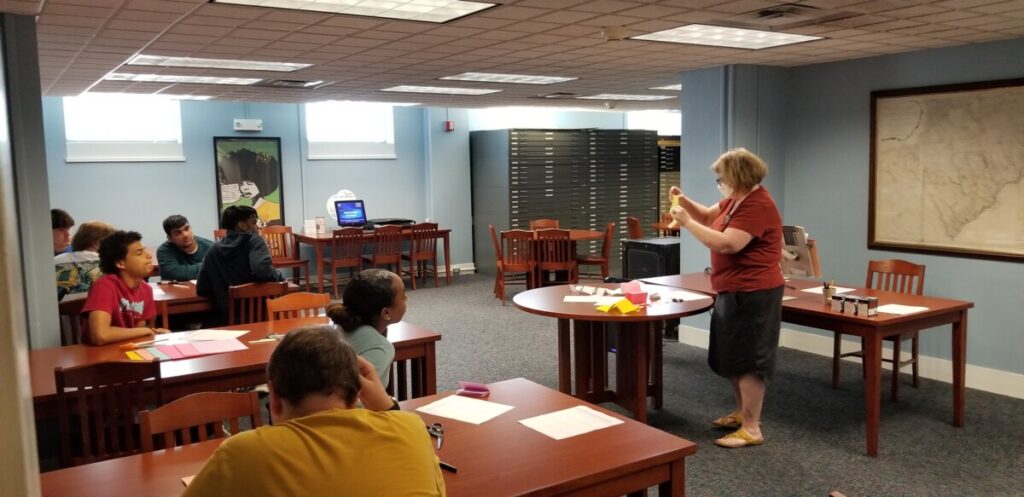
THR 145-01: Stagecraft, Tara Webb, Instructor
This class was taught by Interim Head Kathelene Smith for multiple sections of THR 145: Stagecraft. SCUA staff focused on the history of UNC Greensboro by tracing the evolution of fashion on campus. This entailed creating a large exhibit of textiles in the Hodges Reading Room illustrating the change in fashion over a hundred-year period, from the school’s opening in 1892 until the 1990s. Included in the session was a presentation related to student fashion through the years, as well as information on how to access SCUA’s online resources. Additionally, there was a hands-on activity in which the students examined photographs and yearbooks by decade, resulting in a class project.
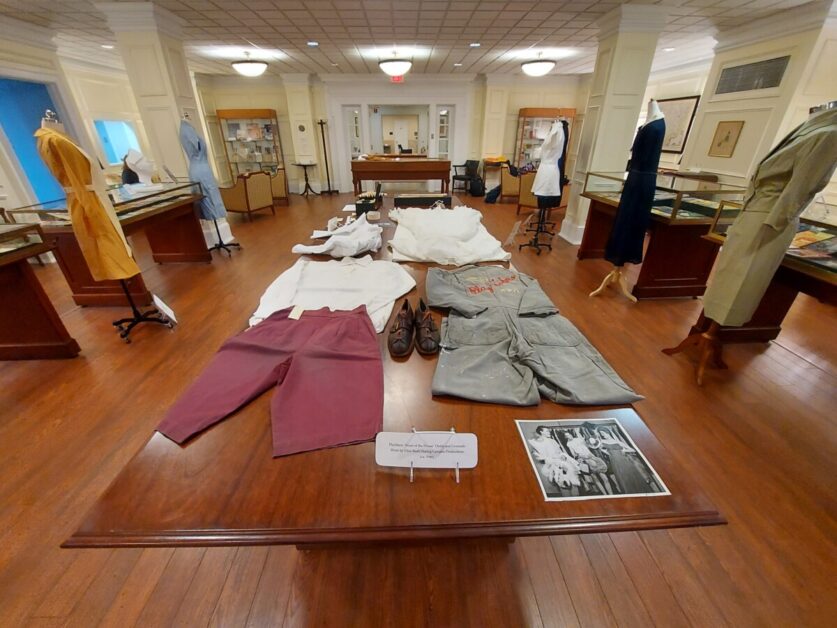
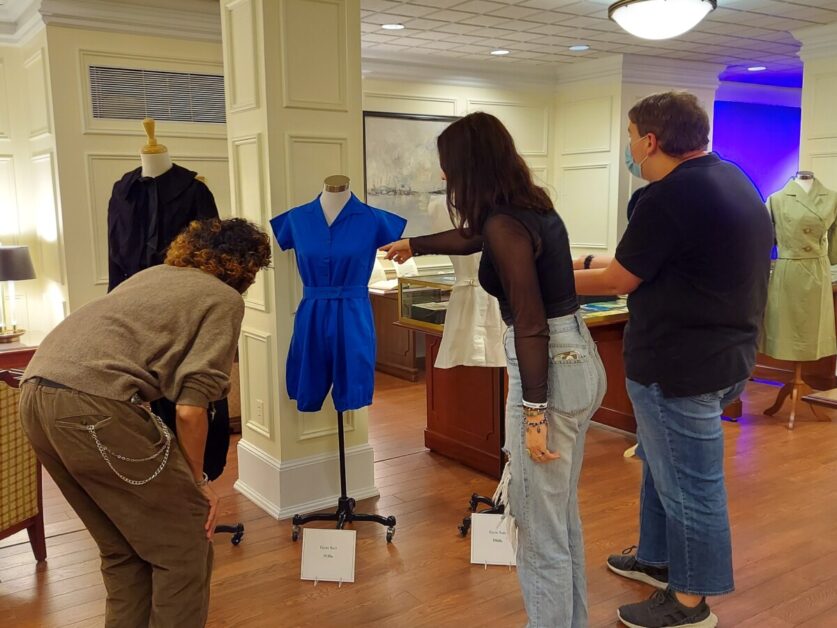
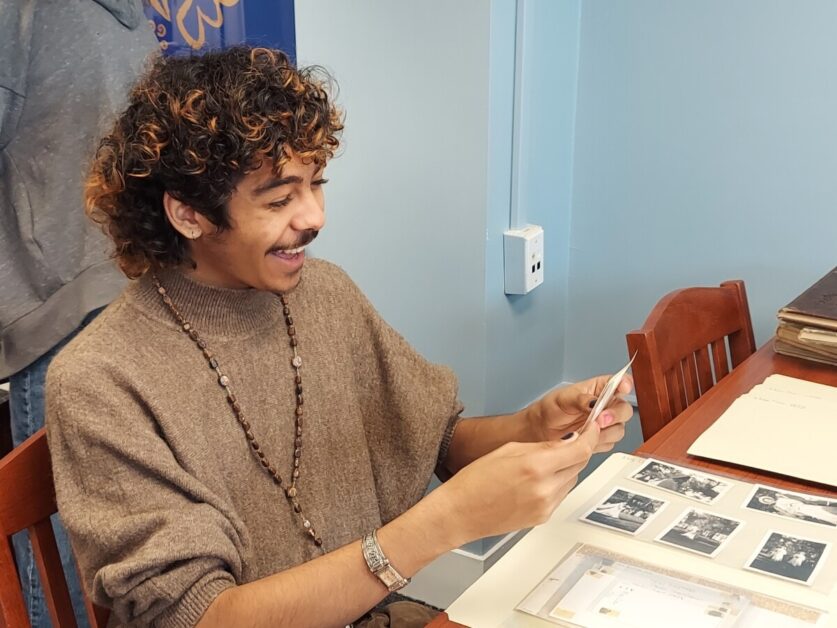
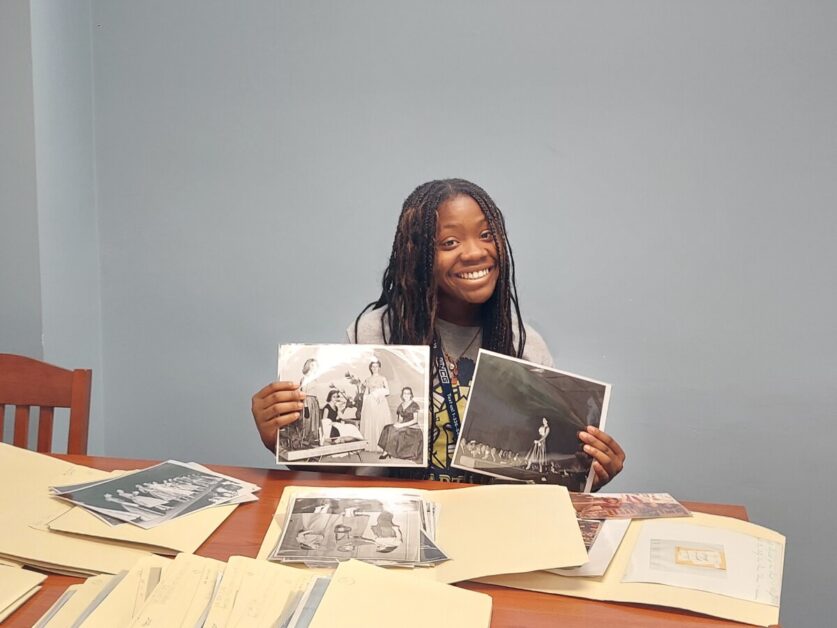
ART 326-01: Printmaking I, Chris Thomas, Instructor
In the studio classes, students have the opportunity to participate in a hands-on demonstration of SCUA’s 19th century Washington Iron Handpress, as well as examine examples of the various types of printmaking, including intaglio (etching, mezzotint, engraving), relief (woodcut and linocut), lithography, and serigraphy (including RISO) that are housed in the Rare Book and Special Collections. After a brief introduction to the history of letterpress printing, Archivist Suzanne Helms led the print demonstration and Specialist Carolyn Shankle curated the display. Printmaking I students were learning about relief printmaking in their studio classroom, so this opportunity to experience typesetting and letterpress printing as well as examining historical examples from our collections provided a broader understanding of a subject they were exploring in the classroom.
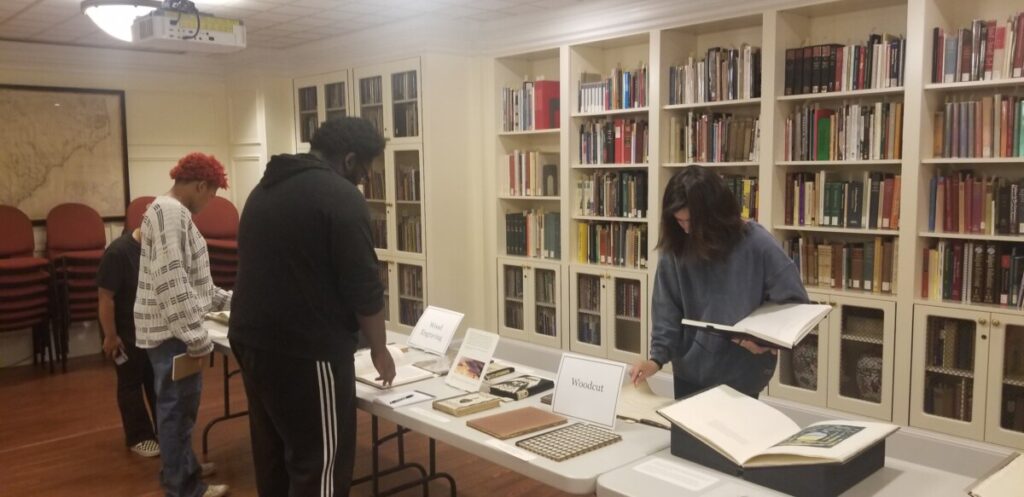
REL 113: Sections 01, 02, 03, and 04 Supernatural Encounters, Rohit Singh and John Borchert, Instructors
On an overcast Thursday in October, Specialist Carolyn Shankle and Archivist Patrick Dollar led four groups of students on the Campus Ghosts of UNCG walking tour. This class focused on supernatural encounters, so the stories of local hauntings were greatly appreciated! After each tour, Dollar and Shankle brought their group to SCUA for a pop-up display featuring early books on witchcraft and Gothic novels.
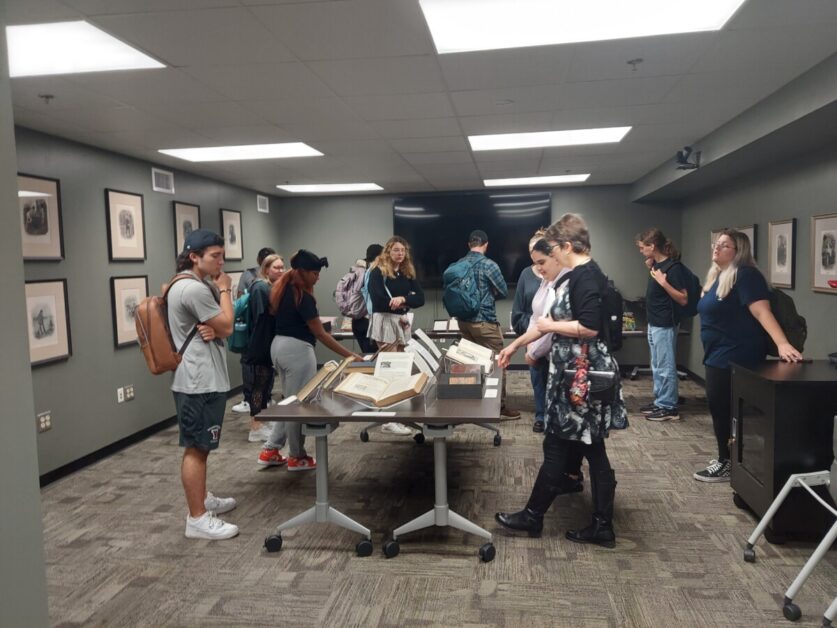
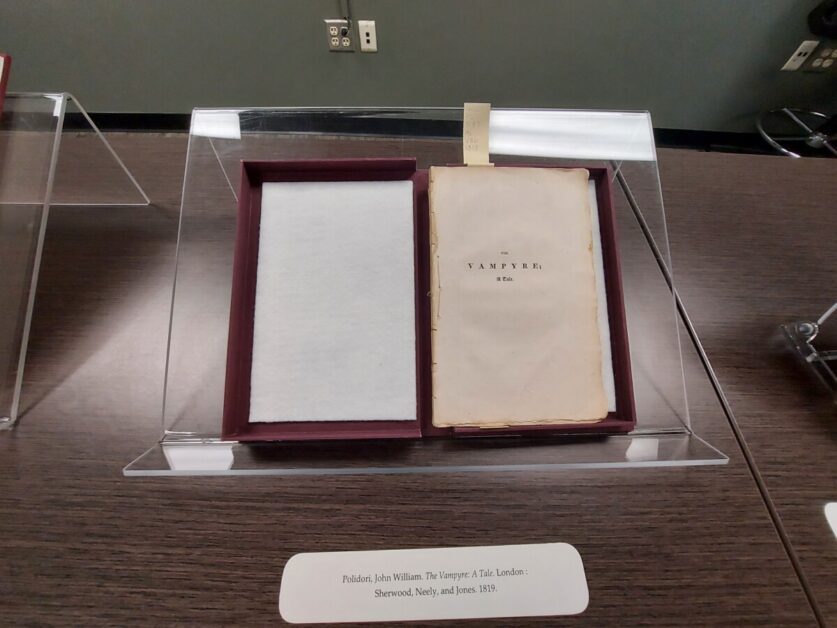
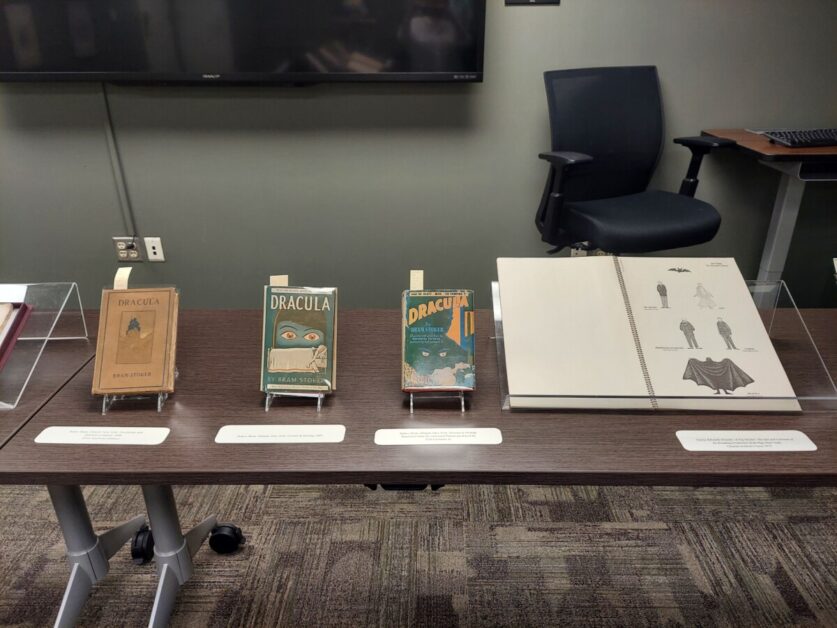
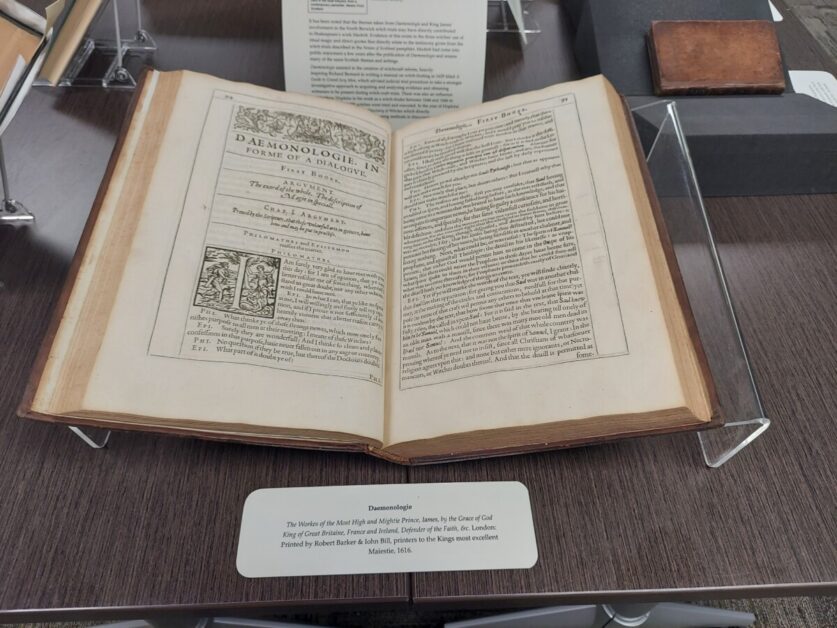
Sample of materials included in the pop-up display, left to right: John Polidori’s The Vampyre [1819]; selection of editions of Bram Stoker’s Dracula, from the first American edition [1899] to Edward Gorey’s Toy Theatre edition []; and James V/James I Daemonologie [1616].
THR 101: First Year Foundation, Jehann Gilman, Instructor
This year’s Theatre 101 class focused on the plays being produced by the School of Theatre on campus during the 2022-2023 season. Special Collections and University Archives has materials related to two of the productions from the current season: A Midsummer Night’s Dream and The Wild Party. For the class visit, Archivist Patrick Dollar focused on pulling those materials from our manuscript collections (Robert C. Hansen Performing Arts Collection, Triad Stage Records, Carolina Theatre Records), University Archives, and rare book collections. To illustrate the entire life of a theatrical production, Dollar pulled playscripts, set designs, set models, photographs, playbills, and posters. Students learned about primary sources and visiting an archive, looked through the pictured pop-up exhibit, and got to go hands on with theatre broadsides in a document analysis.
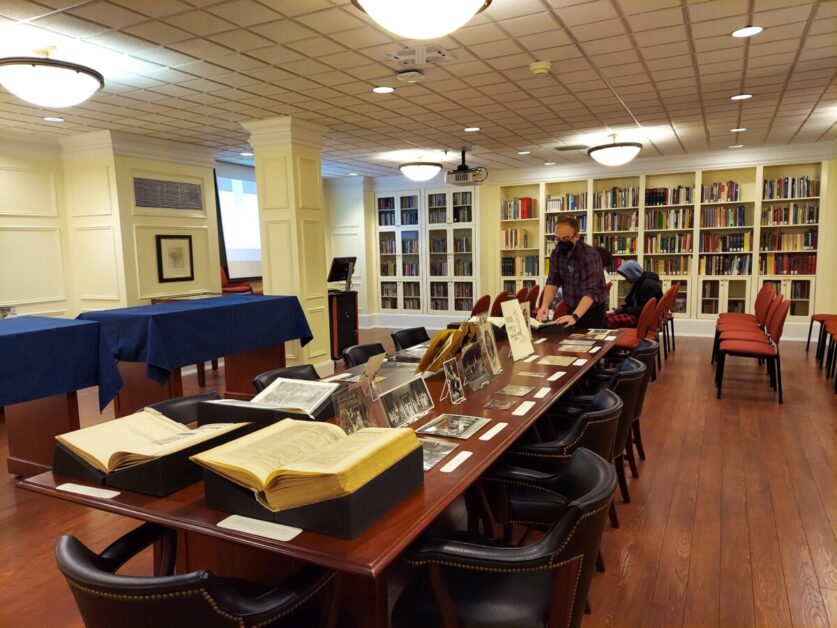
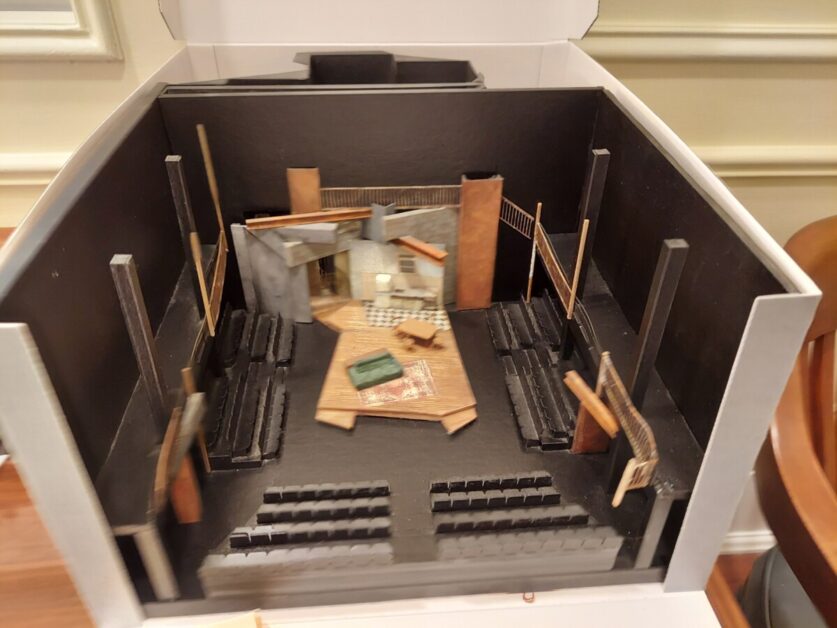
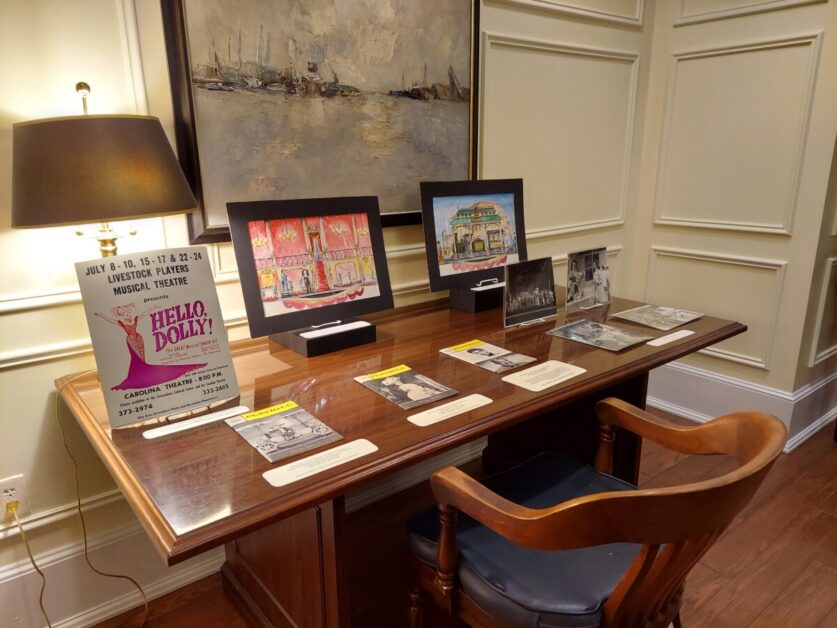
Selection of the materials chosen for the pop-up display
ART 140-02: Foundation Design 1, Sarah LaPonte, Instructor
Rare Books houses materials that document the development of color systems and color theory, from Goethe’s Theory of Colours, Ostwald’s color science, to the Munsell Color System, and examples of the Natural color system. All these works complement our copy of Josef Albers’ Interaction of Color (1963), with which students can explore the various visual exercises Albers designed.
For this class session, students were finalizing their zine project and looking towards their final projects. They came to SCUA to explore the different book formats found in Rare Book’s collection of artist’s books. Specialist Carolyn Shankle curated the pop-up exhibit.
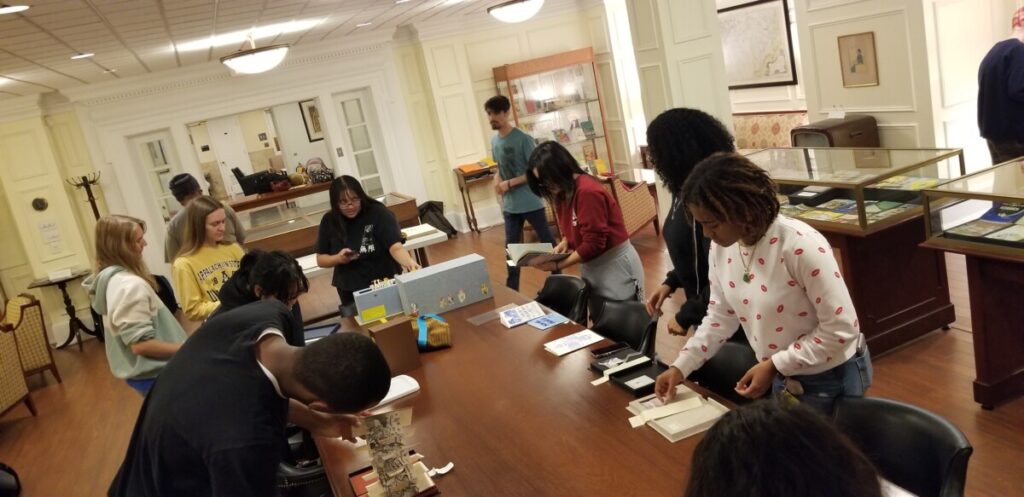
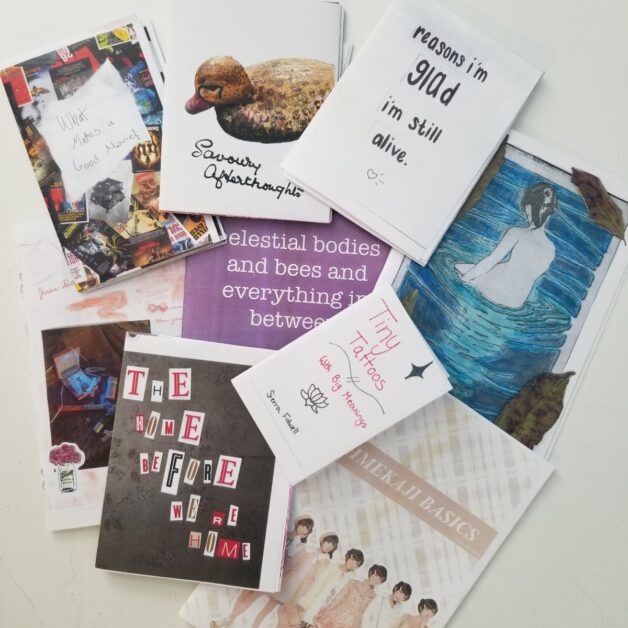
ENG 221-02: Writing of Poetry, Emilia Phillips, Instructor
In collaboration with Associate Professor Emilia Phillips, Specialist Carolyn Shankle and Archivist Suzanne Helms designed an immersive experience of writing poetry inspired by Surrealist techniques. In the first class session, Introductory Poetry students explored examples of Surrealist poetry and other forms of chance-based composition within Special Collections and University Archives. Additionally, students collaboratively created a poem using the exquisite corpse method. Each student composed a line of the poem but could only see the line preceding theirs as they wrote. This spontaneous composition technique resulted in the poem seen in the image below, showing the set type. After the poem was written, each student set their lines in type in preparation for printing in session two.
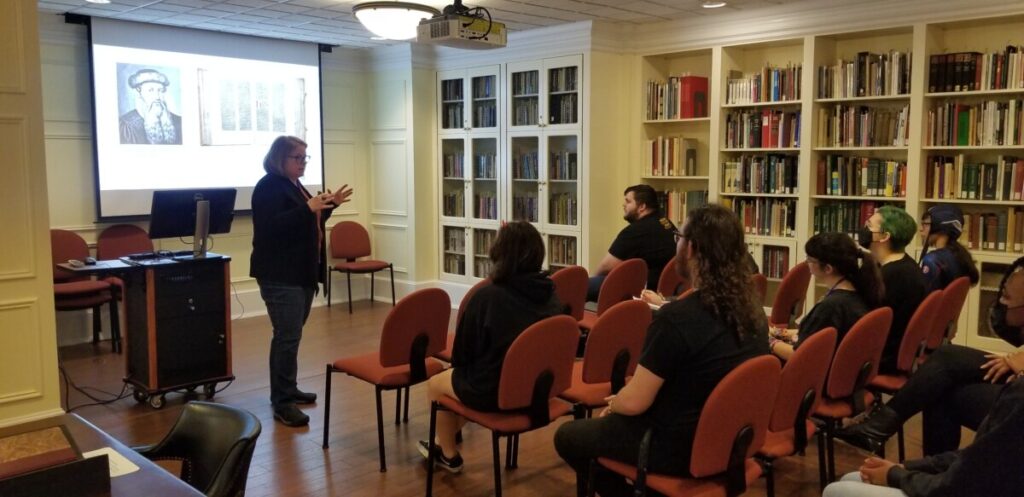
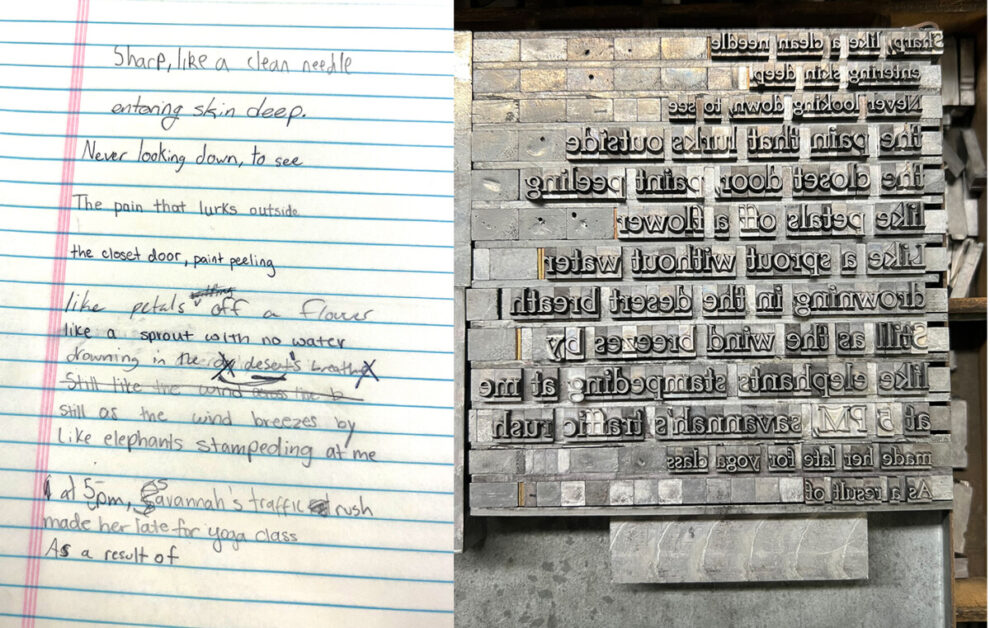
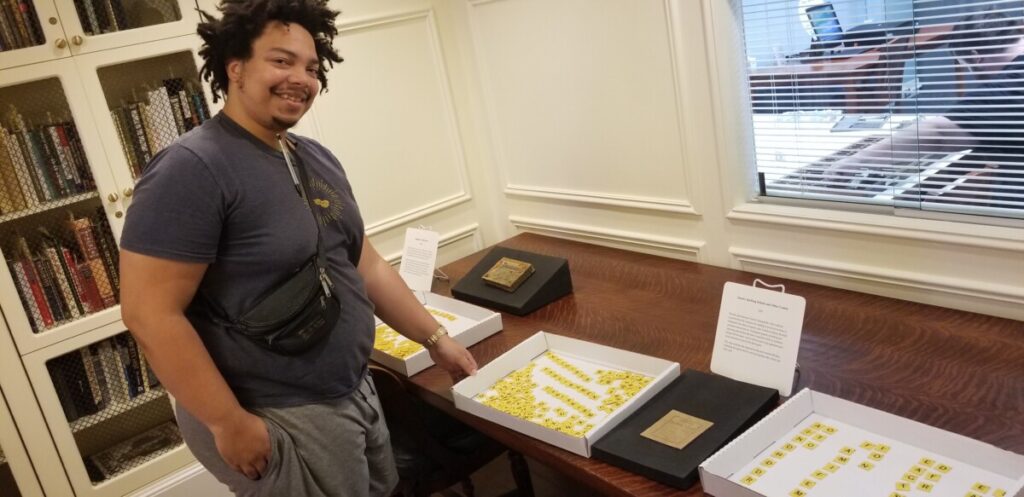
During the second session, students both printed using SCUA’s 19th century Washington Iron Handpress as well as explored Surrealist writing techniques. This is an example of the “cut-up” or “collage” techniques. The other Surrealist writing techniques that the students explored included substitution, translation, and black-out poetry.
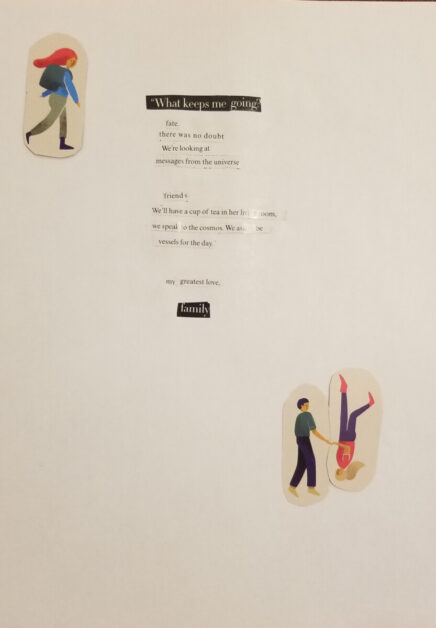
Later in the semester, students met with Suzanne Helms for a brief overview of the history of chapbooks and learned how to create their own books. Their final project for Phillips’ class was to create a chapbook that included at least four of their poems written over the course of the semester.
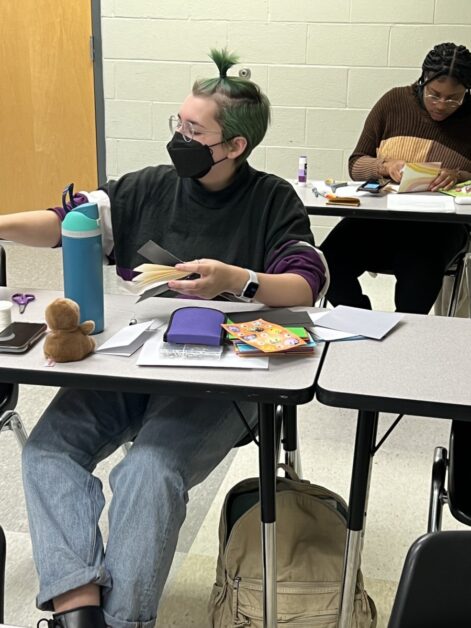
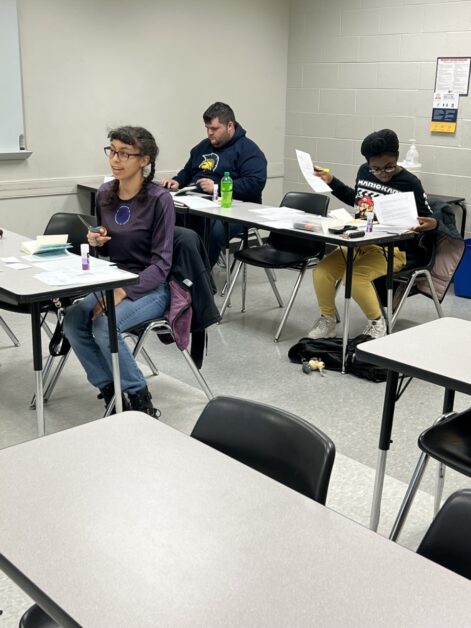
ENG 337-01: Global Middle Ages, Amy Vines, Instructor
Dr. Amy Vines and Specialist Carolyn Shankle met several times prior to and during the fall semester in order to plan a two-day immersive session for ENG 337 Global Middle Ages. During these class sessions, students explored items in the Rare Books collections for their assignment “Meaningful Connections.” Up to this point, the students’ “readings and discussions [were] geared toward[s] understanding the rich variety of networks between groups in order to counter the notion that the Middles Ages is only something important in Northern Europe and that it was isolationist and homogenous.”
The assignment involved incorporating materials from SCUA’s Rare Books collections which were grouped into three general categories: Health and Wellness, Religion, and War & History. Within each of the categories there were books of several hundred pages to items which were a single page. During those two days, students took notes, images, and video of materials of the items that interested them for their project.
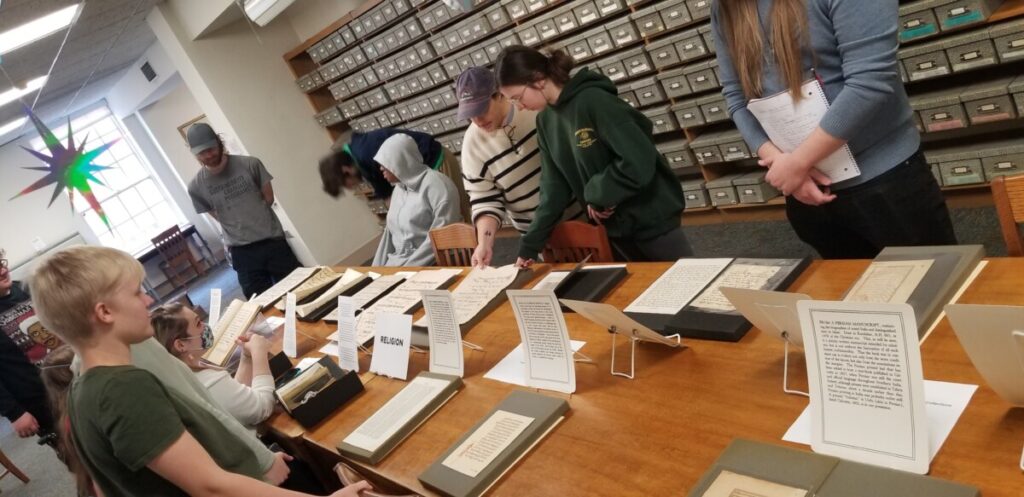
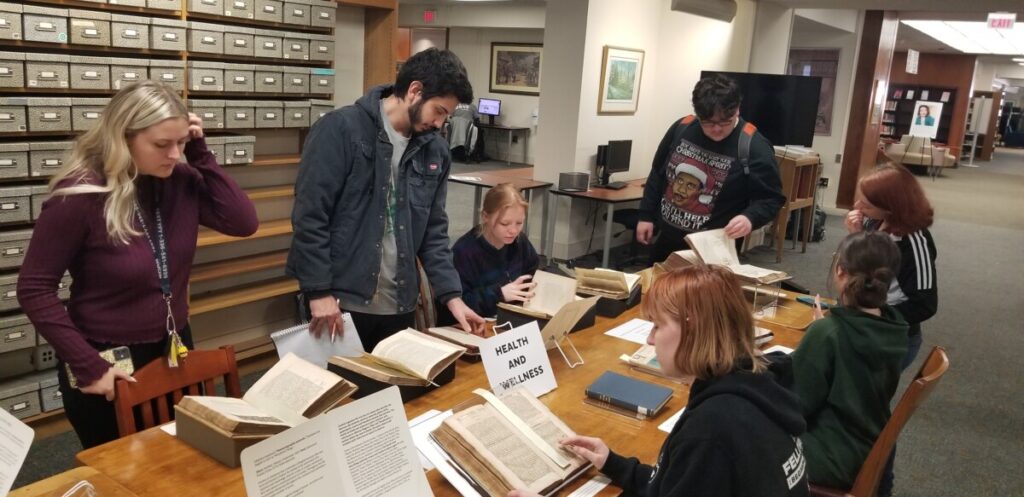
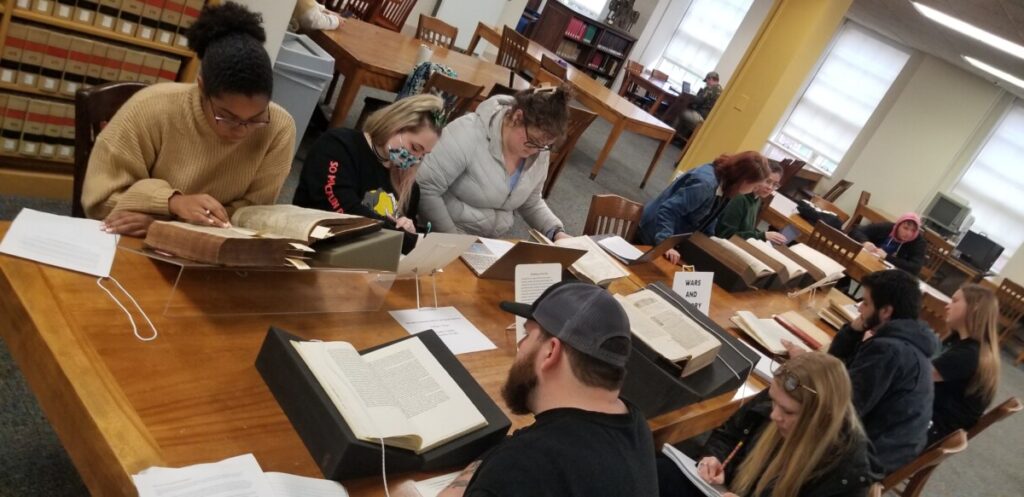
MUP 301 and MUP 601 Repertoire Class – Cello, Alex Ezerman, Instructor
One of the ways SCUA enhances student learning is by providing UNCG students with world class collections and service. An example of this is the UNCG Cello Studio visit to be introduced to the UNCG Cello Music Collection, the largest archival holding of cello-related material in the world. Students were able to interact with materials from the archival holdings of renowned cellists, including two Grammy award winners and one Grammy nominee. One of the pieces on display, Rudolf Matz’s Cello Concerto (1976) was performed by UNCG students at the UNCG School of Music’s Sinfonia Concert on November 21st, with soloist Jonathan Simmons. Interested in listening to the concert? Follow this YouTube link
